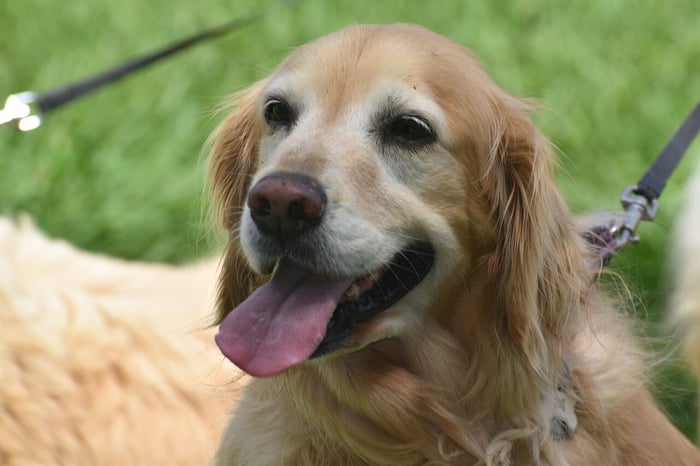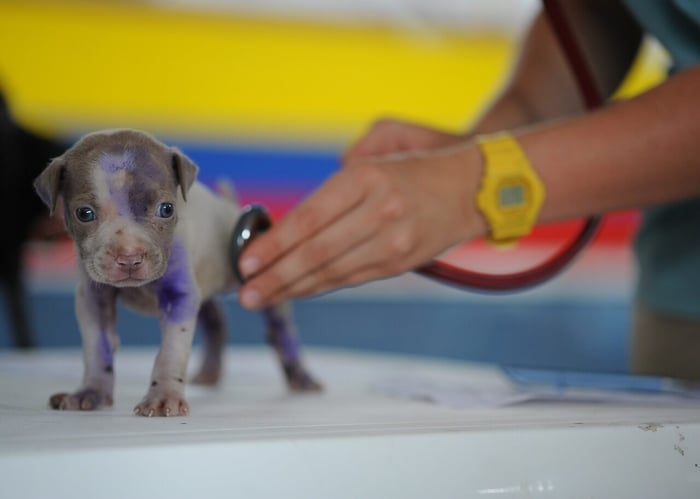Hello dog parents! Let's chat about leash training - a key step in your journey with your furry friend. Whether you're guiding a playful Labrador Retriever or a sprightly French Bulldog, the right approach can make all the difference.
Understanding Leash Training
Leash training is all about teaching your dog, whether a curious Beagle or a lively Labrador, to walk nicely by your side. It's not important to prevent them from wandering off. Course it's important to teach them conduct and make sure they stay safe.
The advantages are safety improved obedience and a stronger connection, between you and your furry friend. Just picture a stroll with your Bulldog or an effortless walk, with your Siberian Husky. Additionally it's an opportunity to engage in activity together!
Preparing for Leash Training
Ready to start leash training? The right gear and a calm environment are key. Choose a sturdy leash and a comfortable collar or harness, suitable for your dog's size and breed, whether a robust Rottweiler or a petite Yorkshire Terrier.
Start in a quiet place, like your backyard, to help your dog focus. This is especially helpful for breeds like the sensitive French Bulldog or the energetic Beagle. Ensure an patient approach to create an environment that fosters training experiences for all breeds whether it's the intelligent Siberian Husky or the playful Golden Retriever.
With these basics in place, you're all set to begin the training journey with your four-legged friend!
Basic Leash Training Techniques
Now that you're all set up, let's jump into the training itself. The goal here is to teach your dog, whether it's a curious Beagle or a majestic Siberian Husky, to walk calmly by your side.
Introducing the Leash and Collar: Begin by letting your dog, like a Labrador Retriever or a Poodle, get used to the leash and collar. Let them sniff and wear it around the house without any pressure. This helps breeds like the sensitive French Bulldog or the independent Dachshund get comfortable with the new gear.
First Steps: Start with short, positive sessions. Lead your dog around your home or yard. Rewards and positive reinforcement have an impact particularly when dealing with dog breeds such, as Golden Retrievers or Boxers. Keep initial walks short, sweet, and rewarding.
Consistency is Key: Consistency is crucial, no matter if you’re training a strong Rottweiler or a gentle Yorkshire Terrier. Regular, short training sessions are better than long, irregular ones.
Multifunction Hands Free Dog Leash With Safety Seat Belt

$22.99
Whenever I need a long leash for maximum freedom of movement, a short one for better control, or a seatbelt for car safe, only this leash suits for me. 6 in 1 Leash Hands-free Shock Absorbing Bungee Safety Seatbelt Stationary… read more
Dealing with Common Challenges
Leash training isn't always a walk in the park. You might face a few hurdles, but don't worry, they're all manageable with the right approach.
Pulling on the Leash: A common issue, especially with strong breeds like Rottweilers and Labradors. If your dog pulls, stop walking. Wait until they come back to you or the leash slackens before moving forward. This helps them understand that simply exerting force will not lead them to their desired destination.
Fear and Anxiety: For breeds like the sensitive French Bulldog or the reserved Dachshund, fear can be a big challenge. Be patient and reassuring. Introduce new environments gradually and keep training sessions positive and stress-free.
Distractions: Squirrels, other dogs, or moving cars can be too tempting for curious breeds like Beagles or Siberian Huskies. Train your dog to focus on you with commands like 'look at me' or by using treats to regain their attention.
Different Breed, Different Approach: Remember, each breed has its quirks. A Yorkshire Terrier might need a gentler approach, while a Golden Retriever might require more exercise before a training session to burn off excess energy.
Advanced Leash Training Tips
Once you and your dog have mastered the basics, you can move on to more advanced leash training techniques. These can be especially helpful for energetic breeds like the Siberian Husky or intelligent ones like the Poodle.
Heel Command: This is teaching your dog to walk right beside you. It's useful for maintaining control in crowded areas or with larger breeds like the Labrador Retriever. Start by having your dog on your left side and use the command "heel" with a treat to guide them.
Long-Leash Training: This gives your dog more freedom while maintaining control, ideal for breeds like the Golden Retriever known for their love of exploration. Gradually increase the leash length, teaching them to respond to commands from a distance.
Off-Leash Training Foundations: Start this in a safe, enclosed area. To establish trust. Encourage obedience utilize commands such, as "come" and "stay." These instructions are especially beneficial when working with breeds like the Beagle, which are renowned, for their scenting abilities and inclination to explore.
Breed-Specific Training: Adapt these advanced techniques to your dog's breed characteristics. A Rottweiler might need a firm, consistent approach, while a Yorkshire Terrier could respond better to gentle encouragement.
Safety Considerations
As you progress in leash training, keeping safety at the forefront is crucial. Whether you’re walking a sturdy Boxer or a swift Siberian Husky, here are some key safety tips to keep in mind:
- Be Aware of Your Surroundings: Always be alert to potential hazards, like other animals, traffic, or crowded areas, especially when walking breeds like the curious Beagle or the protective Rottweiler.
- Proper Gear is Essential: Ensure that the leash and collar or harness are in good condition, especially for strong breeds like Labradors and Dachshunds. This prevents breakage and escape.
- Weather Considerations: Be mindful of the weather conditions. Breeds like the French Bulldog can be sensitive to extreme temperatures. Ensure your dog is comfortable and safe, whether it’s hot or cold.
- Nighttime Walks: For evening walks, reflective gear or a light on the collar is helpful, particularly for breeds like the Golden Retriever or Yorkshire Terrier, to keep them visible and safe.
- Training in Different Environments: Gradually introduce your dog to various settings. This helps them adapt to different stimuli, making walks more enjoyable and safe, no matter the breed.
Conclusion
Well done on completing our leash training guide! By now, you've equipped yourself with the knowledge to help your furry friend, be it an enthusiastic Labrador Retriever or a graceful Poodle, become a well-behaved walking companion.
Remember, leash training is a journey, not a destination.














